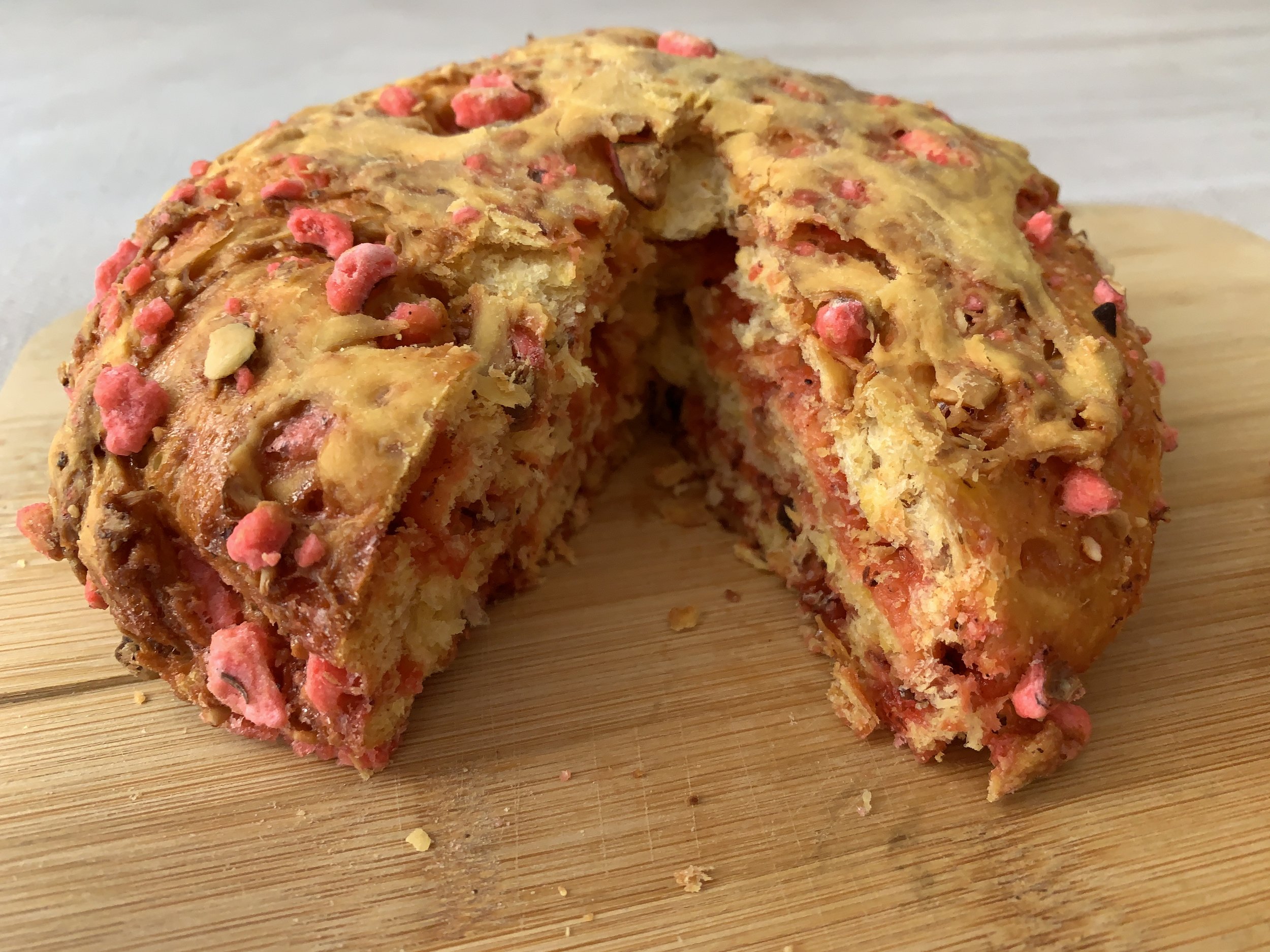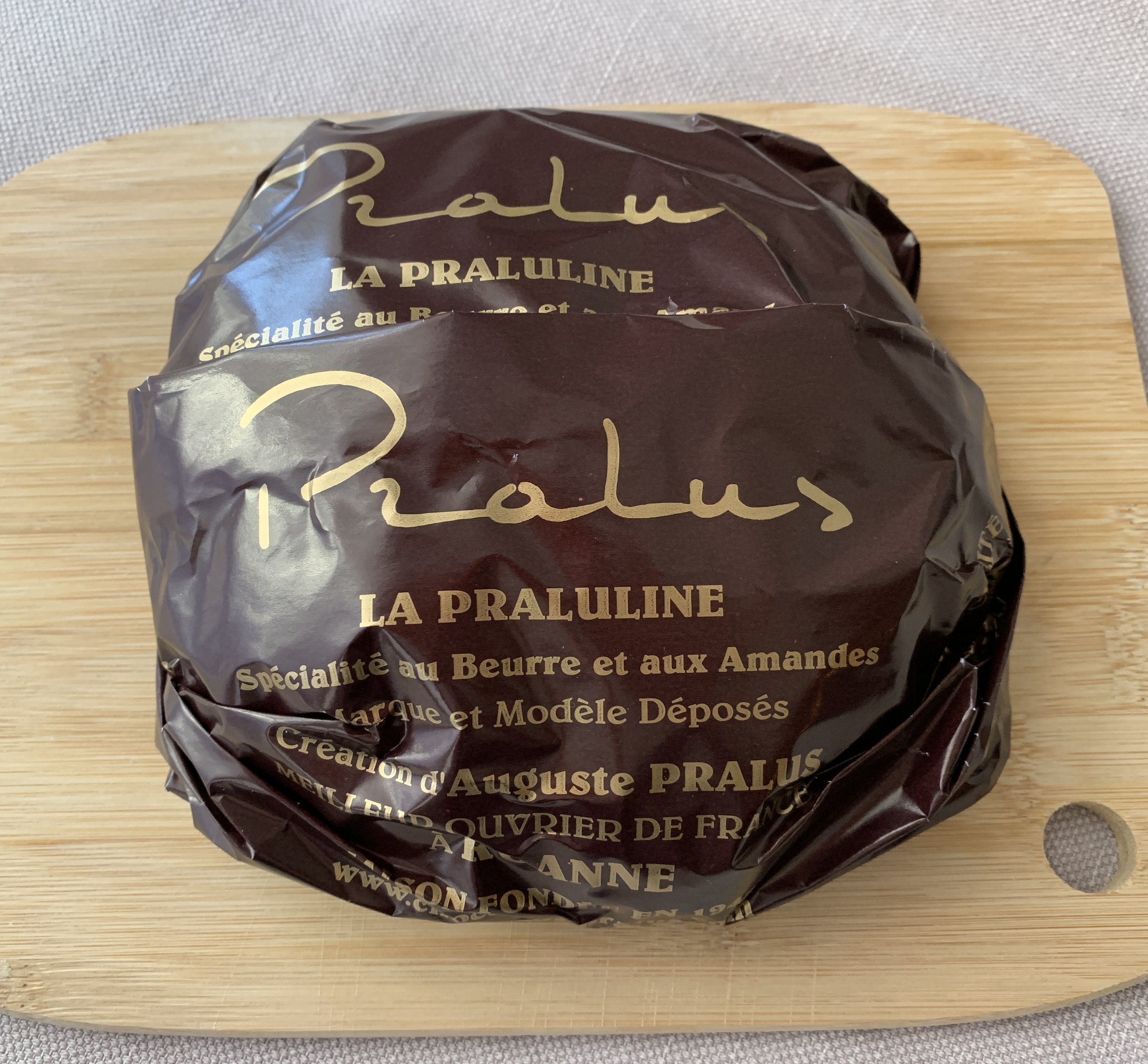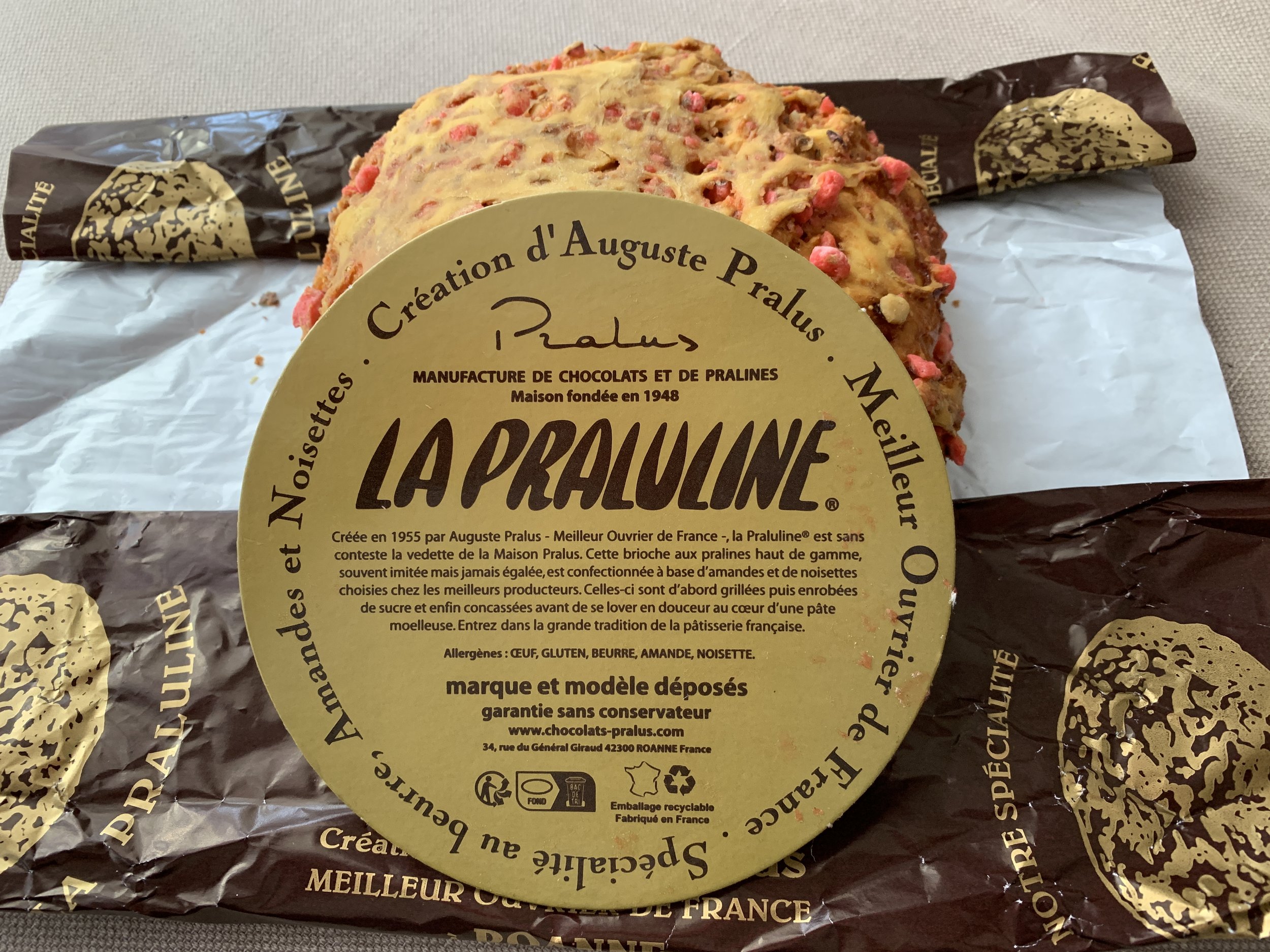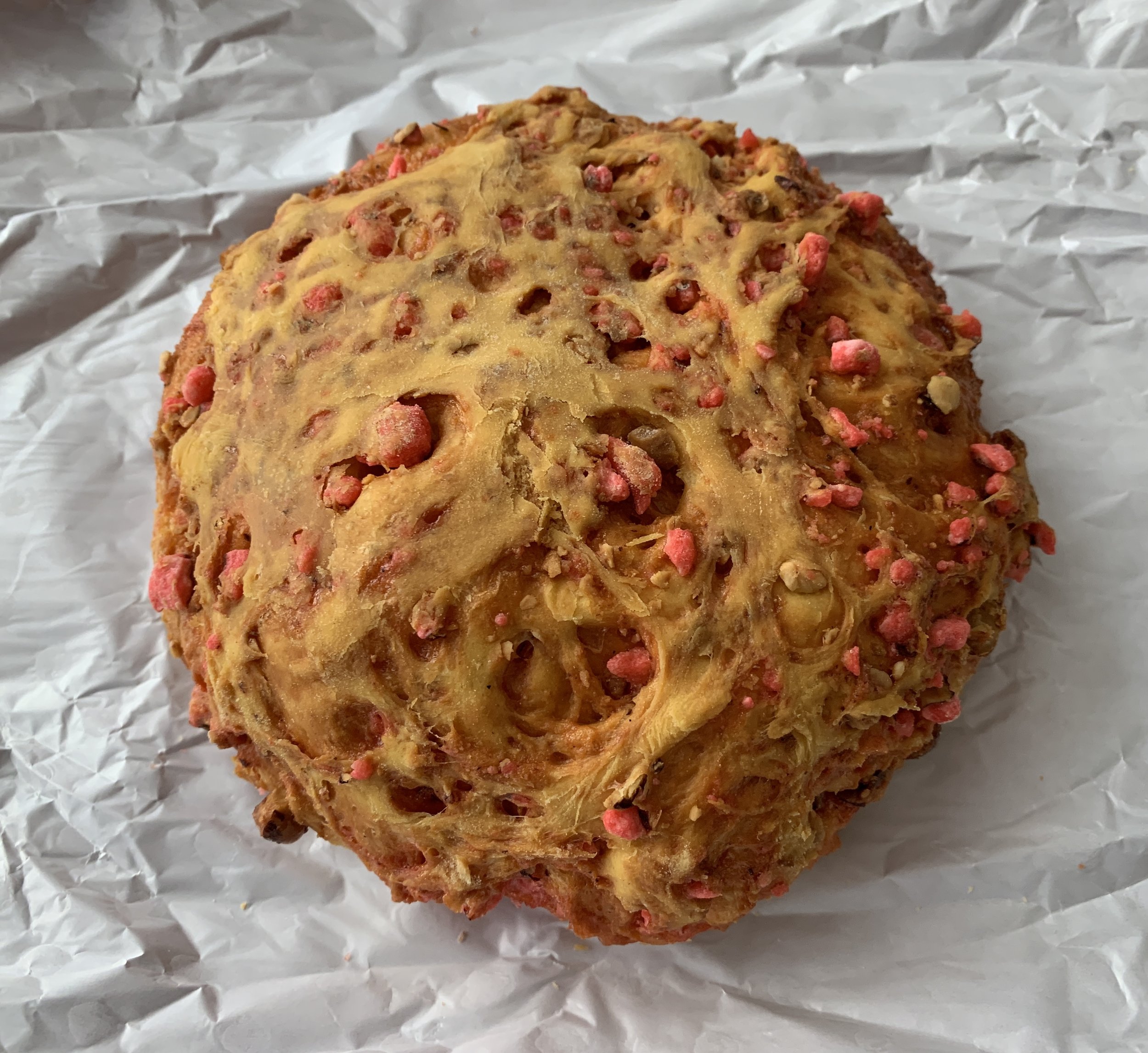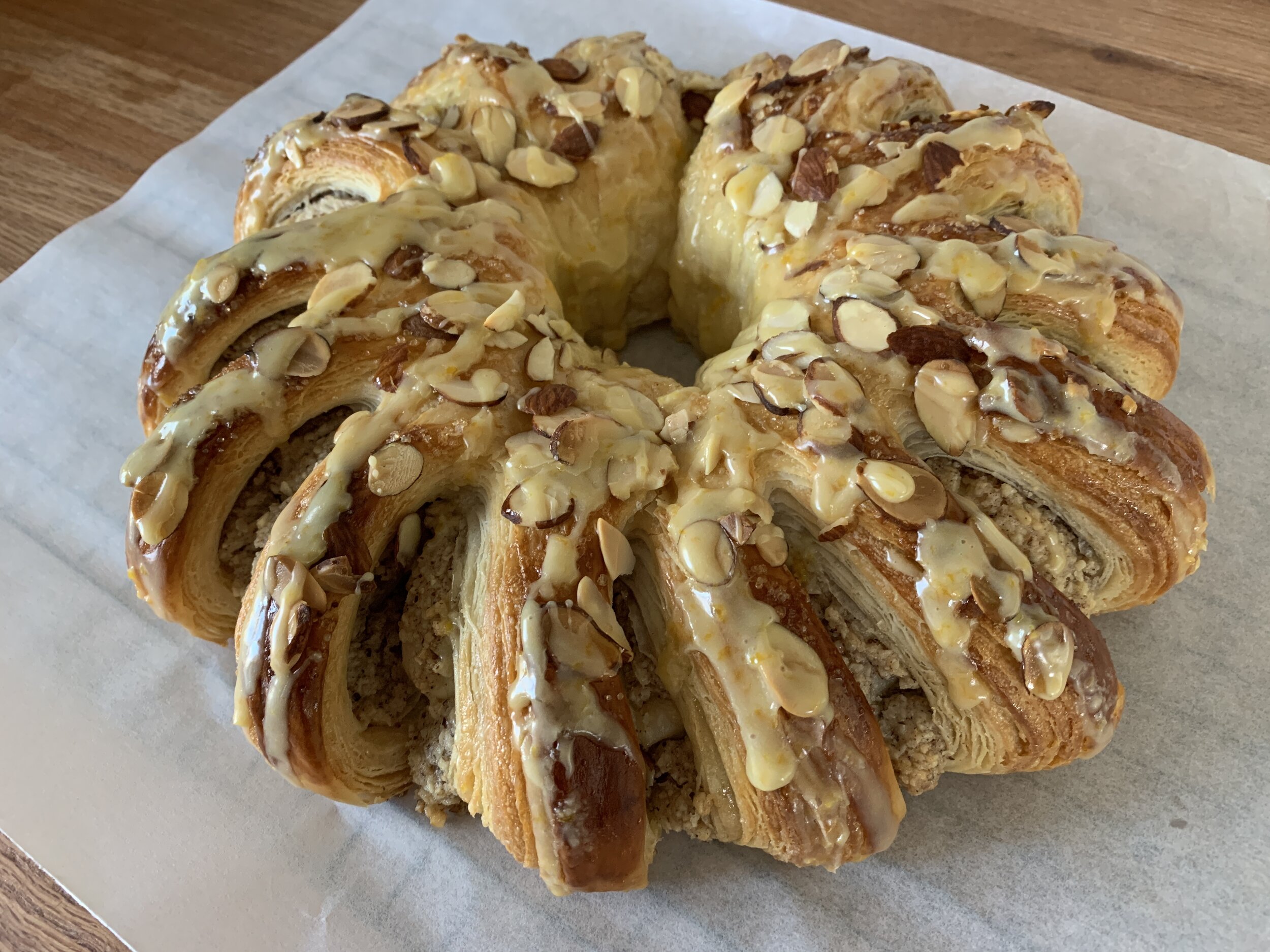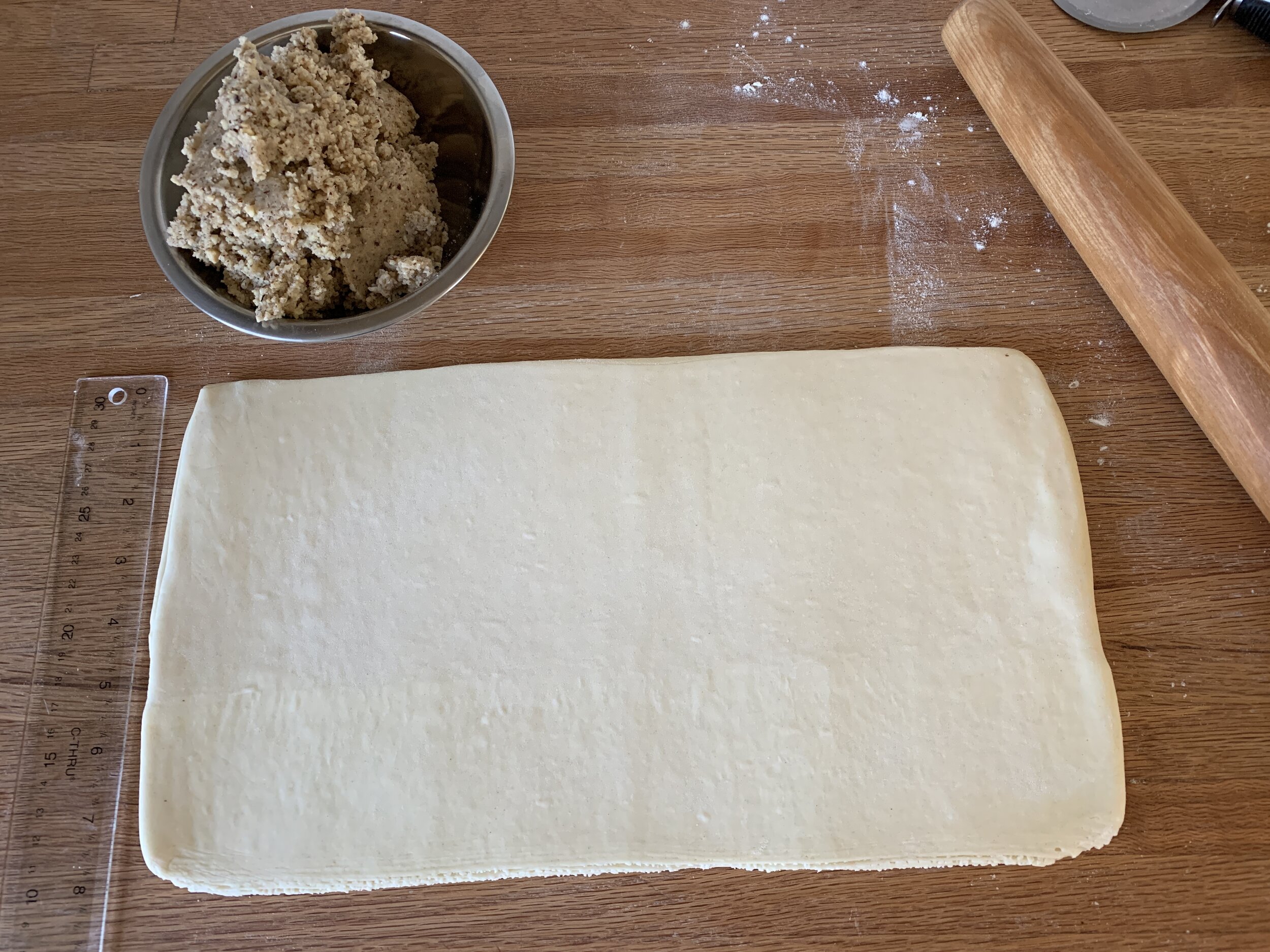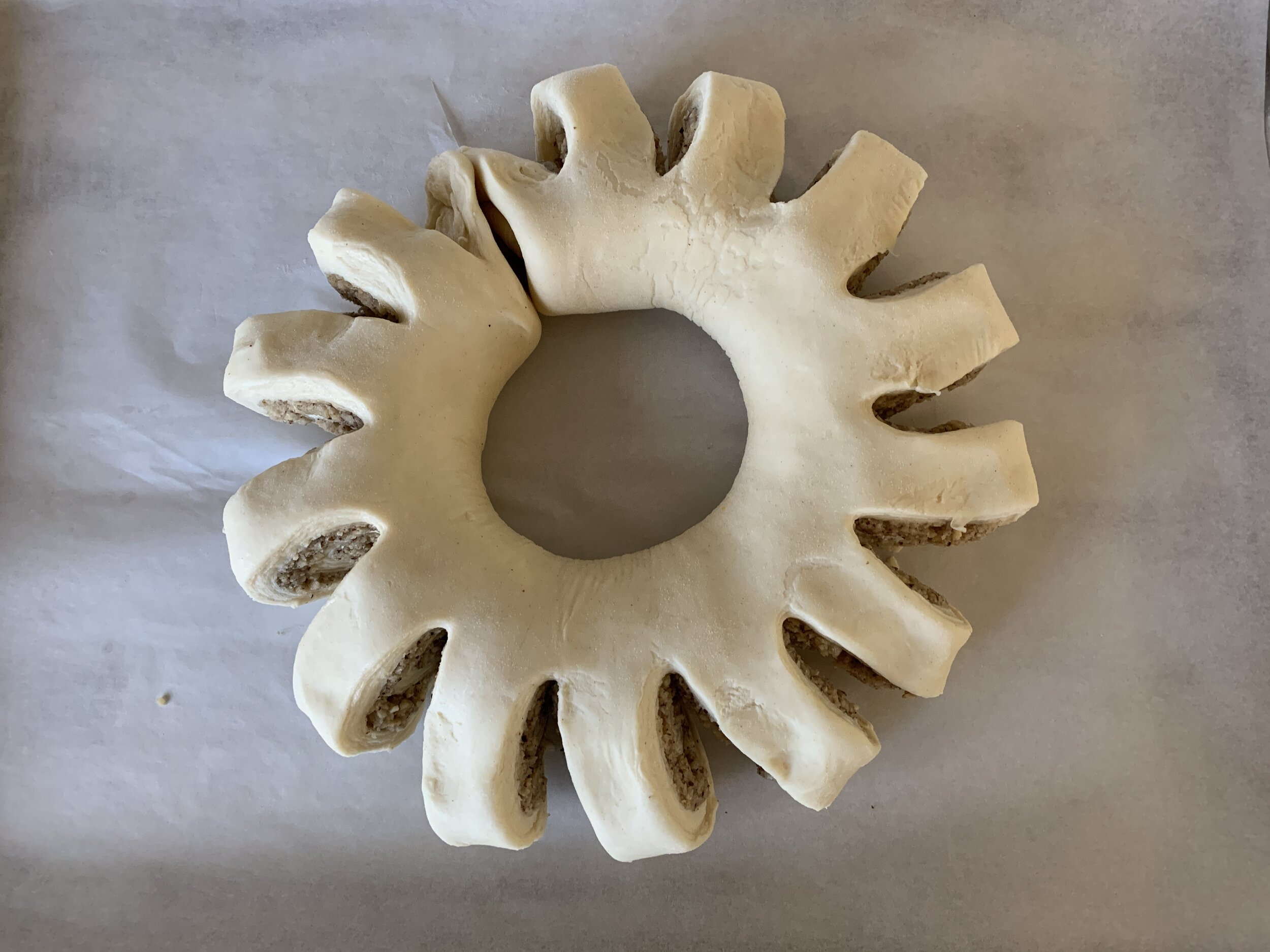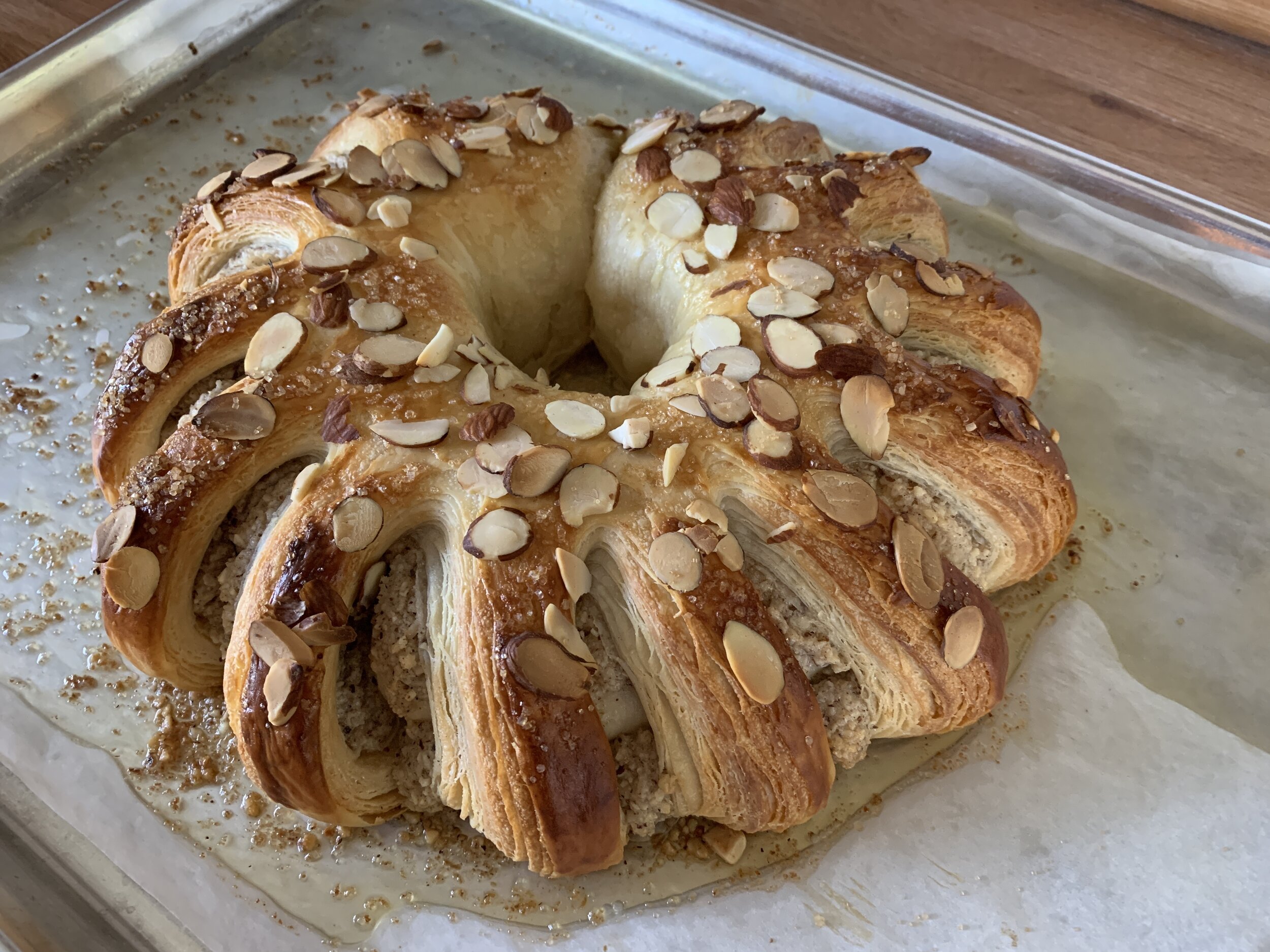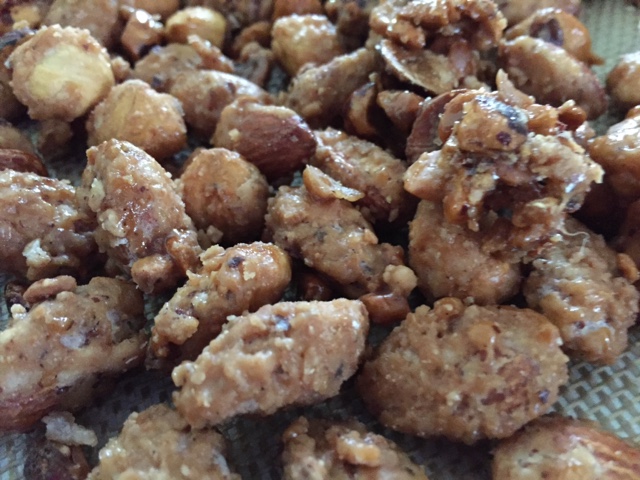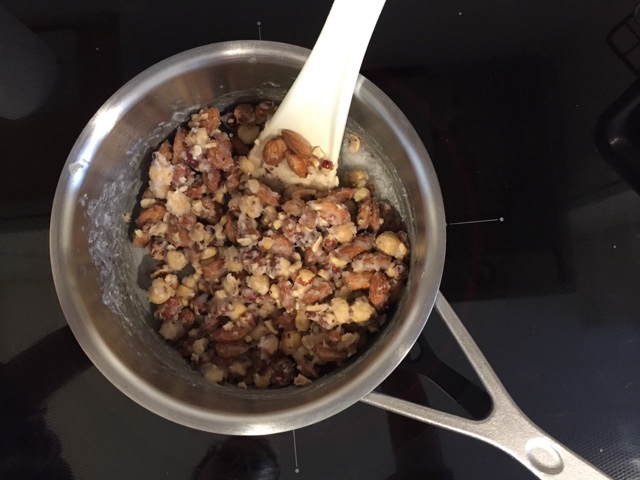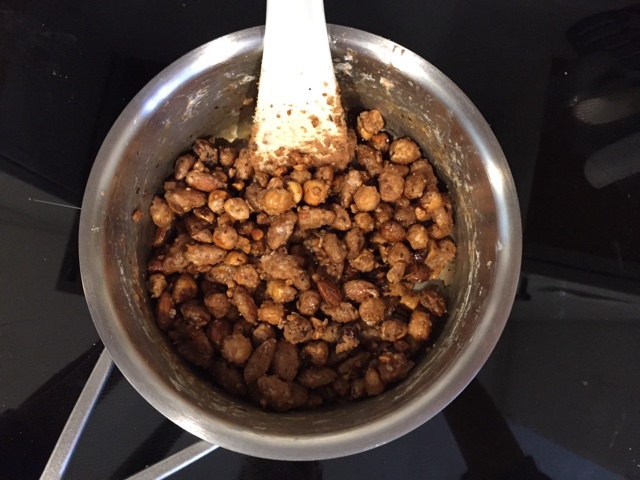French Tarte Faves (FTF) No. 4: Tarte aux noix et au caramel
/Wow! My last FAVES post was over four months ago!! Well here’s No. 4 in the line up - my caramel nut tarte.
I see these FAVES as a way of doing a deeper dive into some of my favorite bakes. Read/scroll through as you wish. This one includes the nitty gritty details of figuring out ingredient quantities for different sized tartes as well as changing up the nuts you might want to use for your own version. You can even opt for chocolate dough too!
Mind you, I haven’t made this particular FAVE for quite some time. The caramel nut tarte was a staple for me back in our Providence days, particularly in my shop where I sold individual sizes, made full sized versions for special orders/holiday times and even petite ones for yummy treat assortments.
As I searched through my posts and photos, I found this one from back in autumn 2022. I think that’s the last one I made! It’s all gussied up with crème Chantilly and sesame brittle and boy was it good.
An autumn wonder!
Of course I do realize it’s spring, a season when our baking (and eating) thoughts are more likely to turn to citrus and fruity, lighter fare rather than nuts and caramel. But, since Steve requested a caramel nut tarte for his April 25th birthday dessert, what could I do but comply.
On a side note, while in Lyon on our recent France trip, we passed a pastry shop where Steve spied a tarte écureuil in the window. Écureuil is French for squirrel - awww, how clever - a squirrel tart! Get it - nuts, squirrels - hah! When we went in to purchase a small one, Steve asked for a “tart squirrel” and the woman behind the counter laughed and understood right away. Even though the tart was shallower and more meagerly filled than the one I typically make (and not nearly as good I must say), the birthday dessert idea was launched.
Petite versions from my archives
The process is a good one for planning ahead. Three components make up this creation: dough, filling and a mix of lightly toasted nuts all of which can be prepared and stored separately until you’re ready to go. Here’s the recipe PDF including all the components in one document. I’ll go through the steps below.
Since I was making so many different sizes of this tarte back in the day, being little Miss detail, I created a list with the portions of each component I would need for each size plus the number of different sizes that one recipe of filling would fill. Yes, I know what you’re thinking . . . . .
Let’s review the components.
I typically use a favorite pâte sucrée d’amande for this tarte. I can make a batch (or 2 or 3) of dough ahead and refrigerate or freeze it. I can even go so far as to think about what sizes of tarte I might want to make, portion out the necessary dough and have it at the ready (as you’ll see in a bit).
The dough is straight forward to make, either using a mixer or by hand. If I’m doing a single batch, I often just do it by hand using a medium mixing bowl. First cube up 137 g / 9.5 tablespoons cold unsalted butter and set aside as you prepare the other ingredients. You want the butter to remain cool so don’t dilly-dally. You can also do that part ahead, hold the cubed butter in the fridge then take it out 10-15 minutes or so before you want to mix everything.
Weigh out 227 g / 1 3/4 cups all purpose flour, 85 g / 3 ounces (a generous 3/4 cup) powdered sugar, 28 g / 1/4 cup almond flour and place them in the mixing bowl along with a scant 1/2 teaspoon fine salt.
Have one large egg and a teaspoon vanilla extract ready on the side.
Now work the butter into the mixture with your fingertips until you achieve medium fine crumbs. You can still see some butter pieces in the image below. NOTE: if opting to use a mixer, set it on low and let the paddle do the work. I find it takes maybe 4-5 minutes to get to the nice crumbled butter stage.
Add the egg and vanilla, toss it up with the fork to get the mix started. I then switch to my fingers and a bowl scraper to toss and smear the mixture until it comes together in the bowl. If you’re making one full size tarte, divide the dough in two and wrap one half to freeze for later. Chill the other half for a good couple of hours or overnight.
I planned a small version for the birthday dessert - on the right below is a 140 mm (~5.5”) ring and the 110 g of dough needed to line it. The other two I’ll freeze for the next round.
Remember - full recipe here!
The day you wish to proceed, make the caramel/butterscotch filling. NOTE: you can make this a couple of days ahead, keep it refrigerated then gently warm it for use.
Mise for caramel filling
Place 140 g / 10 tablespoons unsalted butter, 200 g / 1 cup dark brown sugar, 110 g / 1/3 cup honey and 50 g / 1/4 cup granulated cane sugar in a medium saucepan. Melt on low then increase the heat, bring to a boil and simmer a couple of minutes.
Bubble bubble toil and trouble!
Take the pan off the heat and blend in one tablespoon vanilla and 45 ml / 3 tablespoons heavy cream. Careful - it’s hot! Transfer to a stainless bowl and set aside until you’re ready to assemble/bake.
For the nuts, choose your favorites. I like a 5-nut mixture but you can use only pecans for example or create your own mixtures. For a full size 9” tarte I use about 4 cups of nuts. A cup of nuts generally weighs anywhere from 4 - 5 ounces depending on their size, but don’t get hung up on weights here - precision isn’t that important. Simple measures will do the trick.
Here’s my usual mixture: 1.5 cups / ~210 g whole natural almonds; 1.5 cups / ~170 g walnut halves and pieces; 1/2 cup / ~66 g hazelnuts, 1/4 cup / ~32 g pecans, 1/4 cup / ~32 g pistachios. Depending on the size of the tarte you’re making, you might coarsely chop the nuts for smaller sized tartes so they tuck into the space better.
A bit more about nuts: I generally use raw nuts and lightly toast them before use to bring out their flavor. Since some nuts tend to burn faster than others, I toast almonds and walnuts at 325º - 350ºF about 10 minutes then decrease to 300º - 325ºF for pecans, hazelnuts and pistachios for 8-10 minutes. Back during my Rhode Island shop days, I would toast up a whole bunch of nuts and keep them in a covered container, using them as needed over time. Once nuts are toasted, their shelf life is longer than when raw. If I’ve opened bags of raw nuts and haven’t toasted them, I then freeze them until I need them for their intended purpose. I hope that makes sense!
Lately I’ve been purchasing almonds, walnuts and pecans at Costco for a very good price. I tend to use less of hazelnuts and pistachios so I buy smaller bags of those at Trader Joe’s. If TJ’s doesn’t have raw nuts in stock, on occasion I buy their unsalted, dry roasted versions. Just sayin’.
We’ve talked about dough, caramel filling and nuts - now let’s do this. When you’re ready to actually make your tarte, roll the dough out to about 4 mm thick and line your chosen ring (s). Place the lined ring on a parchment lined sheet pan, prick the bottom all over with a fork and place it in the freezer while you heat the oven to 350ºF.
One example of a lined tarte ring
When the oven is ready, remove the lined ring/sheet pan from the freezer, line the ring with parchment paper and fill with dried beans or ceramic weights.
Lined and weighted
Bake for 15 minutes with weights, remove from the oven and lift the parchment and weights out. The crust should be starting to set but won’t be fully baked yet. The bottom will still appear “doughy”.
Partially baked after weights removed
Place back in the oven for another 5-10 minutes until the dough is set, golden and appears dry (see below). Cool on a wire grid.
Measure out your chosen nuts and portion out the caramel filling. Below are the components for the small tarte I made for the birthday boy. For this size I use 1/3 cup caramel and 2/3 cup nuts. You should be able to appreciate the blind baked crust being set, dry and lightly browned.
Blend the caramel into the nuts and fill the tarte shell evenly.
Ready for the oven
Here’s the age old reminder - every oven is different. Depending on the size of the tarte, the bake time will vary. I look for the caramel to become bubbly and call it a day. This may take about 20 minutes and up for larger tartes. The main thing is just keep checking!
Just out of the oven, filling bubbly
Let cool on a wire rack. The bubbly-ness will subside as it cools. Gently lift the ring off after the first 10 minutes or so, then cool completely.
I did a followup baking session recently to use up the dough/nuts/caramel that I had already prepared. I made three different sizes (180 mm / 7”; 160 cm / 6.3” and 120 cm / 4.7”) - with an eye to giving the two larger ones to a couple of our neighbors who I felt needed/deserved them. The smallest one I saved for us. They were the perfect sizes to use up the ingredients I had. Love it!
Ready for filling
All baked up
As if you haven’t had enough already - another delicious way to use up ingredients is to fill a blind baked shell about 2/3 full with the caramel/nut mixture (eyeball it), bake that and cool completely. Then pour a 1:1 dark chocolate ganache over it and let cool until set. You can’t beat it. Oh my.
For a large tarte I’d make the ganache somewhere in the realm of 100-150 ml cream and 100-150 g chocolate which should be plenty. You can eyeball how much you want to pour over the nut filling, even leaving some nuts peeking out. And if you have extra? Fridge the leftovers and use later as desired (macaron filling anyone?)
Steve and I enjoyed his birthday version with a small scoop of vanilla ice cream over a petite slice (remember, everything in moderation). So good. This tarte keeps well over 2-3 days, covered at room temp.
Nothing fancy but deelish!
We are now enjoying the most beautiful sight from our north facing window.
Flowering crabapple
Up close and personal
Take care until next time.






















